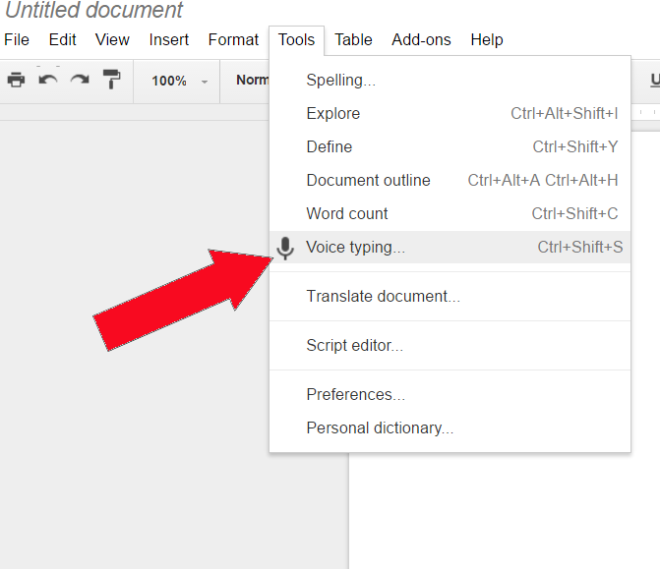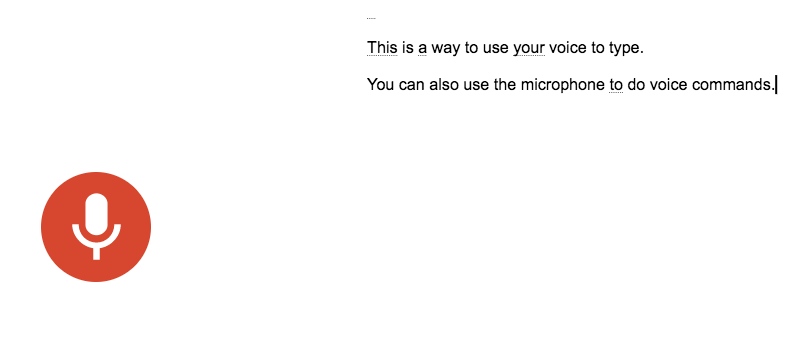Introduction
Ever feel like your fingers can't keep up with your thoughts? Do you spend hours typing away at documents, wishing there was a faster way? Well, fret no more! Google Docs has a built-in gem called Speech to Text that lets you ditch the keyboard and create content simply by using your voice.
This amazing feature is not only incredibly easy to use, but it can also be a major time saver. Imagine dictating your ideas, reports, or even emails in real-time, with Google Docs magically transcribing your words into text. Sounds like a dream, right? Let's dive in and explore how to unlock the power of Speech to Text in Google Docs!
Getting Ready to Speak Your Mind
Speech to Text is all about letting your voice do the work. To get started, you'll need just a couple of things:
- A Microphone: This can be your computer's built-in microphone, a headset mic, or any external microphone that connects to your device.
- Google Chrome Browser: While Speech to Text might work in other browsers, Google Chrome offers the most seamless experience.
Once you have these basics covered, let's ensure Google Docs has permission to access your microphone:
- Open Google Chrome and navigate to your Google Docs document.
- Click on the Tools menu in the top toolbar.
- From the dropdown menu, select Voice typing.
- A small microphone icon will appear. If it's red with a line through it, click on it.
- You might see a pop-up asking you to allow microphone access for Google Docs. Click Allow.
That's it! Now your microphone is ready to capture your voice commands and fuel your Google Docs creation with the power of speech.
Activating Speech to Text
We've prepped your microphone and Google Docs is ready to listen. Now, let's activate Speech to Text and turn your voice into written content:
- Open your Google Doc in Google Chrome.
- Click on the Tools menu located in the top toolbar of your Google Doc.
- From the dropdown menu, select Voice typing.

4. A small microphone icon will appear on your screen. This is your control center for Speech to Text.

Congratulations! You've successfully activated Speech to Text. The microphone icon will turn red when listening and black when paused. In the next section, we'll explore how to use your voice to dictate text and add punctuation for a smooth writing experience.
Dictation and Punctuation with Speech to Text
Now that Speech to Text is activated, let's get down to dictating your thoughts! Here's how to ensure smooth and accurate transcription:
- Speak Clearly: Enunciate your words properly and maintain a natural speaking pace. Background noise can affect accuracy, so try to find a quiet environment.
- Pause for Punctuation: Google Docs is smart, but it won't magically insert commas and periods. To add punctuation, simply say the punctuation word itself while dictating. For example, say "This is a sentence, with a comma" or "This is another sentence. Full stop."
Here are some handy voice commands for common punctuation:
- Period: Say "period"
- Comma: Say "comma"
- Question Mark: Say "question mark"
- Exclamation Mark: Say "exclamation mark"
- New Paragraph: Say "new line" or "new paragraph"
Tip: As you dictate, Google Docs will transcribe your words in real-time. Don't worry if it doesn't catch everything perfectly – you can always go back and edit later.
In the next section, we'll explore some advanced features and helpful tricks to take your Speech to Text experience to the next level!
Advanced Features of Speech to Text (Optional)
While dictation is the core functionality, Speech to Text offers some bonus features for added control:
- Voice Editing and Formatting: While not as comprehensive as traditional editing, Speech to Text allows basic voice commands for formatting. Try saying "bold" or "italics" to apply those styles to your dictated text. You can also highlight text by saying "select [text]" and then dictate commands like "copy" or "delete." (Note: Voice editing and formatting commands are currently only available in English.)
- Dictation Language Selection: Need to dictate in a language other than English? No problem! Click on the settings icon (three dots) next to the microphone icon and choose your preferred dictation language from the dropdown menu.
These features provide a taste of the additional power Speech to Text offers for a truly hands-free document creation experience.
Mastering Speech to Text: Tips and Tricks for Success
Now that you're equipped with the knowledge to use Speech to Text, let's explore some tips and tricks to maximize its effectiveness:
- Speak Clearly and at a Normal Pace: Enunciation is key! Mumbling or rushing through your words can lead to misinterpretations by Google Docs. Speak clearly and maintain a natural conversational pace for optimal accuracy.
- Find a Quiet Environment: Background noise can be a foe of Speech to Text. Try to minimize distractions and find a quiet space to dictate for the best results.
- Embrace Pauses: Don't feel pressured to speak non-stop. Short pauses for gathering thoughts or structuring your sentences are perfectly fine, and will help Speech to Text understand your intent.
- Proofread and Edit: While Speech to Text is impressive, it's not perfect. Take some time after dictation to proofread and edit the transcribed text for any errors or missed words.
Beyond Basic Dictation:
Speech to Text isn't just for writing full documents. Consider using it for specific tasks that can benefit from voice input:
- Brainstorming Ideas: Stuck on a creative block? Speech to Text can be a great tool for brainstorming. Simply start talking and capture your ideas as they flow freely.
- Summarizing Information: Need to condense a lengthy article or meeting notes? Use Speech to Text to summarize key points while reviewing the material.
- Taking Quick Notes: Speech to Text is perfect for capturing quick notes during lectures, phone calls, or online presentations. Just speak your thoughts and let Google Docs handle the rest.
By incorporating these tips and exploring different use cases, you can unlock the full potential of Speech to Text and transform the way you create content in Google Docs.
Conclusion
We've explored the wonders of Speech to Text in Google Docs! This powerful feature lets you ditch the keyboard and create content simply by using your voice.
Key Takeaways:
- Speech to Text is incredibly easy to activate and use within Google Docs.
- Speak clearly and leverage voice commands for punctuation to ensure smooth dictation.
- Explore advanced features like voice editing and dictation language selection for added control.
- Utilize Speech to Text for various tasks, from brainstorming to summarizing information.
Ready to speak your mind and streamline your workflow? Give Speech to Text a try in your next Google Doc. You might be surprised at how much faster and more convenient creating content can be!

.webp)
.webp)
.webp)
